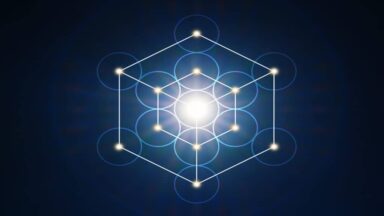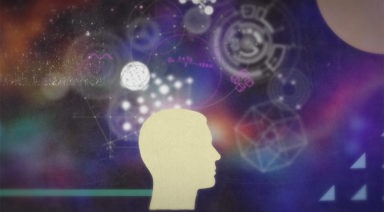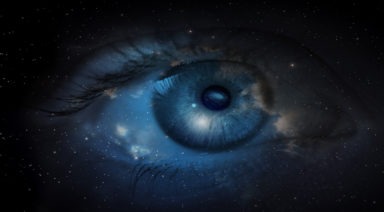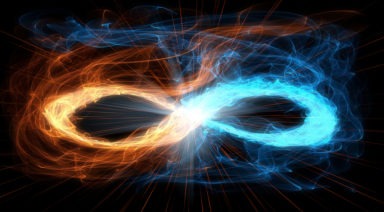Is It Possible to Attain Yogic Superpowers?

Stories of highly devout and enlightened yogis having psychic or physical superpowers are not uncommon in India. The ability to fly, levitate, garner superhuman strength or effect telekinesis are all supposedly attainable abilities if one spends years meditating and practicing yoga. These abilities are described in Patanjali’s Yoga Sutras and are referred to as the Siddhis. While achieving supernatural power sounds enticing, it is precisely for that reason why they are to be approached with caution.
When Siddhis are described by swamis or those who are well-versed in Vedic knowledge, they are spoken of as not actually being magical in any sense. These powers, which seem to be otherworldly, are actually inherent in all human beings and can be accessed with the proper discipline. Some people are even born with these powers, specifically when it comes to psychic abilities.
But these yogic abilities are thought to be a distraction and waste of time for those who are seeking a path to enlightenment. Getting distracted by these powers can lead people to worship the yogi and inflate their egos. Subsequently, it can prevent the yogi from realizing god and oneness with the universe.
Patanjali’s Yoga Sutras
According to the Sutras, once a yogi attains Samadhi or the state of divine union with meditation, there are several ways one can attain Siddhis.
-
- Birth or Genetics – Due to one’s karma they may be born with psychic abilities.
- Herbs – Psychedelic drugs like mescaline or peyote can induce Siddhis, however they must be done under the supervision of a spiritual guide or with the proper knowledge.
- Mantras – This is the rational and desired method of attaining Siddhis paired with austerity and the repetition of mantras, basic or sometimes esoteric.
- Birth or Genetics – Due to one’s karma they may be born with psychic abilities.
Through these primary methods, one can gain abilities including:
- Becoming invisible
- Becoming as big or small as one desires
- Becoming as heavy or light as one desires
- Flying and levitating
- The power to manifest and control things
- The power to be in more than one place at once and more.
There are also psychic powers associated with Siddhis including telepathy, clairvoyance, psychokinesis, and precognition.
While these practices might sound otherworldly, Vedic teachers say they are not as bewildering as they sound. Much like the invisible phenomena in our everyday world, these powers represent realms that are pervasive around us, but not necessarily visible or obvious in our everyday state of consciousness. Because our reality is a product of our consciousness, according to Vedic philosophy, these powers can obviously be manifested by us.
When a yogi reaches the level of attaining these powers, they are said to have reached Samyama. It is a deeply absorbed meditative state where the mind is cleared from wandering thought—a state most people strive to attain just for short periods of time. For advanced yogis this state can be achieved for hours at a time, at which point their mind merges with the mind(s) of other yogis, eliminating the illusion of separation and showing universal oneness. This is the point where yogis can become either distracted by the powers of Siddhis or continue toward a path of enlightenment.
What Are Indigo Children and How to Identify Them?
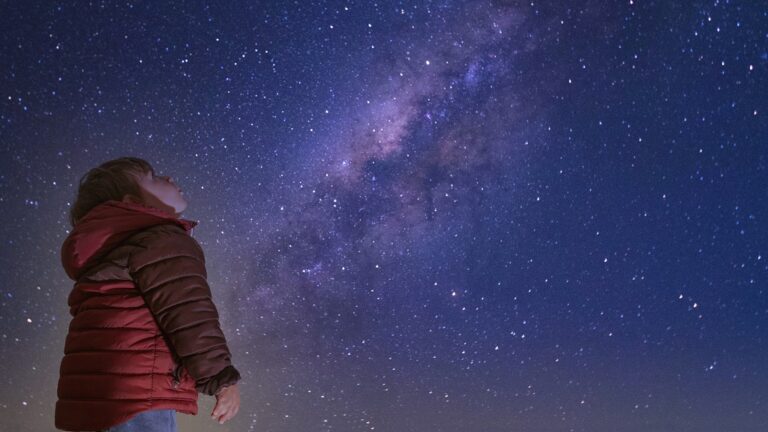
Indigo children are special beings with a unique and powerful spiritual mission. They are attributed with deep intuition and psychic abilities that make them stand out. In this article, we explore in detail what indigo children are, where the concept comes from, and how to recognize them.
Table of Contents
- What Are Indigo Children?
- History and Origin of the Concept
- 10 Common Traits of Indigo Children
- Types of Indigo Children
- Challenges and Common Issues of Indigo Children
- How to Identify an Indigo Child
- Differences Between Indigo, Crystal, Rainbow, and Diamond Children
What Are Indigo Children?
Indigo children are considered a new generation of human beings with a greater spiritual connection and a clear mission to transform society. This concept originated from the observation of certain children born from the 1970s onward, who showed a unique combination of abilities and characteristics that clearly set them apart from their peers. They are called “indigo” because of the predominance of indigo blue in their aura.
These children often stand out for their high emotional sensitivity, creativity, and strong intuitive abilities. They are believed to be old souls who have the mission to challenge established norms and promote positive change in the world. Their purpose is to pave the way for a more just, peaceful, and harmonious society by questioning and transforming outdated societal structures.
The mission of indigo children comes with significant challenges. Their deep sensitivity and perception allow them to see and feel the injustices and imbalances of the world very intensely, which can lead them to experience frustration and disappointment when they encounter resistance to change. However, their determination and sense of purpose drive them to move forward and fulfill their mission.
History and Origin of the Concept
The term “indigo child” was popularized by parapsychologist and author Nancy Ann Tappe in the 1970s. Tappe observed that many children born from that period had a predominantly indigo-blue aura, which led her to develop the theory that these children had special spiritual characteristics and missions. According to Tappe, these children possessed a higher consciousness and were destined to change the course of humanity.
Over time, the idea of indigo children expanded and was adopted by various spiritual and metaphysical schools of thought. In the 1990s, the books by Lee Carroll and Jan Tober contributed significantly to the spread of this concept. The authors described a series of traits and behaviors that identified these children and suggested that their purpose was to lead a global shift toward greater spiritual and social awareness.
Today, the concept of indigo children remains an important part of many spiritual communities and has expanded to include the later generations of crystal and rainbow children, each with their own characteristics and specific missions in the spiritual evolution of humanity.
10 Common Traits of Indigo Children
Indigo children exhibit distinctive characteristics that reflect their spiritual mission and purpose in the world. Below are ten traits that characterize these unique beings:
- Spiritually awakened: From an early age, they feel a connection to something greater. They sense they have a special mission.
- Sense of purpose: They are confident that they are here for an important reason. This conviction drives them to act with confidence.
- High expectations: They set high standards for themselves and others. This can make interpersonal relationships challenging.
- Strong intuition: They trust their perception and can often foresee events. Their intuition guides them in decision-making.
- Question authority: They are rebellious and skeptical of established norms. Their inclination to question authority and established rules challenges the structures they consider unjust.
- Desire to change the world: They seek to transform outdated structures. They are drawn to topics related to social justice, ecology, and human rights, promoting new ways of thinking and living.
- Creativity: They use their artistic talent to express their visions. Their art inspires and raises awareness in others.
- Agents of change: They identify social problems and seek innovative solutions. They work tirelessly to improve society.
- Sense of not belonging: They often feel different from their peers. They may experience a sense of isolation.
- Intense passion: Their energy and fervor are driving forces for change. They can be overwhelming but also highly motivating.

Types of Indigo Children
There are different types of indigo children, each with a particular set of abilities and approaches to fulfill their mission on Earth. These types reflect the diverse ways in which indigo children can influence the world.
- Artists: They use their creativity to inspire and raise awareness in others. Their art often carries deep and transformative messages.
- Conceptuals: Focused on innovating and improving systems, they seek more efficient and fair ways to organize society. They are often inventors and strategic thinkers.
- Humanists: They have a deep desire to help others and improve humanity. They work in fields such as education, healthcare, and human rights.
- Interdimensionals: They possess advanced psychic abilities and a profound spiritual connection. They can act as bridges between dimensions and offer new perspectives on reality.
Challenges and Common Issues of Indigo Children
Indigo children, due to their sensitivity and unique worldview, face several challenges in daily life. One of the most common issues is the frustration they feel when confronted with systems and structures they consider unjust or ineffective. Their desire to change the world and the resistance they encounter often lead them to experience high levels of stress and disappointment.
Additionally, their tendency to question authority and established norms can lead to conflicts with authority figures, such as parents and teachers. This rebelliousness, although an integral part of their mission, can result in behavioral problems and difficulties in structured environments like school. Indigo children may feel misunderstood and isolated because of their different perspectives and values.
Another significant challenge is feeling overwhelmed by their own emotions and those of others due to their high emotional sensitivity. They often have great empathy and an innate ability to perceive the emotions of others, which can result in anxiety, depression, or even physical symptoms such as headaches or digestive issues. It is important that indigo children receive emotional support and tools to manage their sensitivity in a healthy way.
How to Identify an Indigo Child
Identifying an indigo child can be a subtle task that requires observing certain distinctive behaviors and attitudes. A significant indicator is their inclination to question authority and established rules. From an early age, these children show a deep need to understand the reasons behind rules, rejecting the idea of accepting something simply because “that’s the way it is.”
Another way to identify them is through their interests and passions. Indigo children are often drawn to topics related to social justice, ecology, and human rights. They may express a strong desire to make the world a better place and actively seek ways to contribute to these changes—whether through art, writing, or activism.
Additionally, paying attention to their emotional sensitivity and intuition can be revealing. They often have great empathy and an innate ability to perceive the emotions of others. This deep emotional connection may manifest in their concern for the well-being of others and in their tendency to feel overwhelmed by their own emotions and those of others in emotionally charged environments. Recognizing and supporting these qualities can help parents and educators better understand and nurture an indigo child.
Differences Between Indigo, Crystal, Rainbow, and Diamond Children
Indigo, crystal, rainbow, and diamond children represent different spiritual generations, each with their own characteristics and specific missions. Indigo children began to emerge in the 1970s. They are known for their strong sense of purpose, rebelliousness, and desire to transform outdated social structures. Their energy is intense, and their mission is to pave the way for greater awareness and justice.
Crystal children appeared mainly in the 1990s. They are recognized for their peaceful and gentle nature, and for their ability to heal and connect deeply with others. Unlike indigo children, crystal children bring a calm energy and aim to promote harmony and peace in the world.
Rainbow children began to be born in the new millennium, around the 2000s. They possess vibrant and joyful energy, with great creativity and adaptability. Their mission is to balance and bring joy, acting as a bridge between past and future generations. They are highly intuitive and have an innate ability to forgive and show compassion.
Finally, diamond children are the most recent generation, beginning to emerge around 2008. They have an extremely high spiritual connection and an innate ability to manifest their desires and create new realities. They are visionaries with advanced psychic abilities, and their mission is to help humanity reach a higher state of consciousness.







